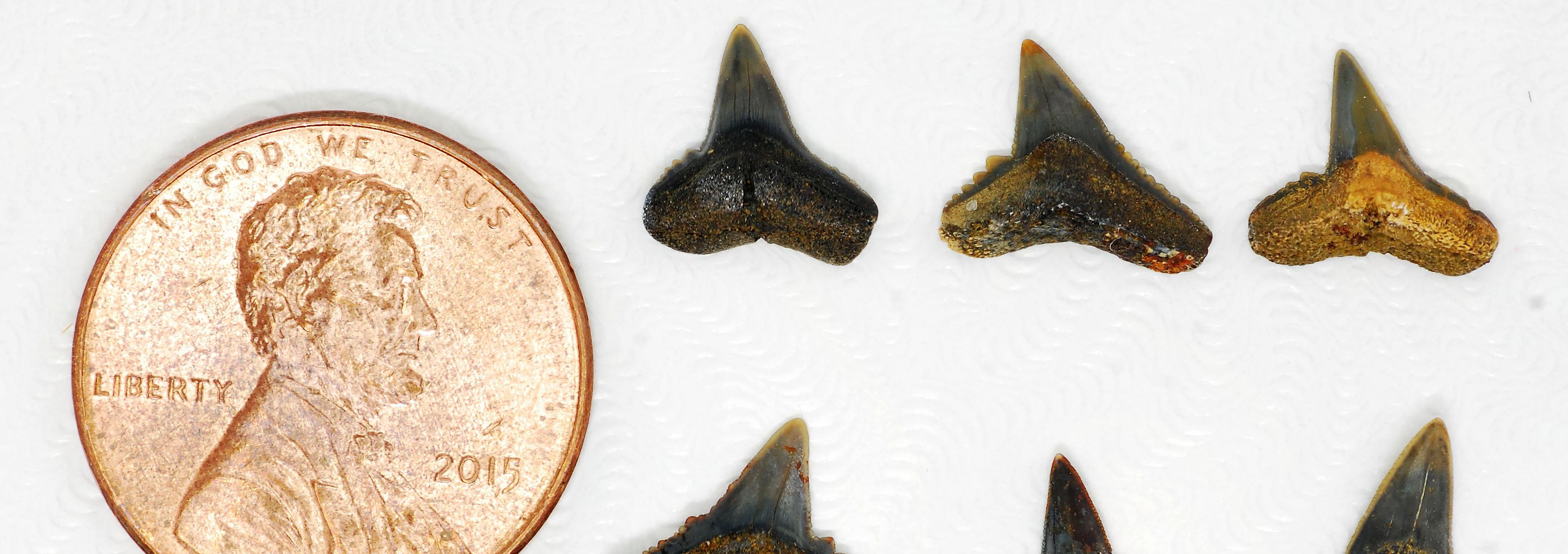
A NEW 40 MILLION-YEAR-OLD FOSSIL SHARK SPECIES DISCOVERED IN LOUISIANA, U.S.A. The new species is ancient relative of modern Requiem sharks

Fossil Carcharhinus tingae teeth. Image courtesy of Jun Ebersole, McWane Science Center, Birmingham, AL.[/caption]
Scientists are pleased to announce the discovery of a new fossil shark species from Louisiana, U.S.A. The team includes David Cicimurri, Curator of Natural History, South Carolina State Museum in Columbia, and Jun Ebersole, Director of Collections, McWane Science Center, Birmingham, AL. The new species dates from the Eocene Epoch of the Paleogene Period, roughly 40 million years ago, and was named based on dozens of isolated teeth that were discovered in southern Louisiana.
The new species, Carcharhinus tingae, is an extinct member of a group of sharks that includes living Bull and Dusky sharks. Although the fossils that represent the new species had been collected decades ago, the scientists recently recognized the fossils as new while at the Louisiana State University (LSU, Baton Rouge) conducting a larger study of fossils fishes of Louisiana. According to Ebersole, “our discovery highlights the importance of museum collections, which preserve specimens for future generations to learn from.” This extinct shark species was named for Dr. Suyin Ting, recently retired from LSU, in honor of her lifelong career in formal education.
Before naming this species, the scientists spent months studying the fossil teeth and comparing them to teeth of other fossil and modern-day sharks. According to Cicimurri, “by examining the teeth of living sharks, we were able to determine that the fossil species was closely related to modern Requiem Sharks, so we used jaws of modern species to reconstruct how the teeth were arranged in the mouth of the extinct species.”
“Like in modern Requiem Sharks, the upper teeth in the mouth of the fossil species are very broad, triangular, and heavily serrated, but the lower teeth are narrower and more pointed” said Ebersole. “When the shark closed its mouth, the lower teeth pierced and held while the upper teeth cut into the prey, a perfect method for feeding on large fish.”, he continued.
After examining specimens in the LSU collection, the pair was able to conclude that Carcharhinus tingae teeth are relatively common in, but restricted to, Louisiana. According to Cicimurri, “we only have evidence that Carcharhinus tingae lived in what is now Louisiana, and we don’t know if it was limited to this area or more widely distributed.” “These teeth are significant because they represent only the second Eocene Carcharhinus species to be described from North America,” said Ebersole, “and the fossils provide important clues about the animals that inhabited the ancient Gulf of Mexico.”
The study, titled New Paleogene elasmobranch (Chondrichthyes) records from the Gulf Coastal Plain of the United States, including a new species of Carcharhinus de Blainville, 1816, was published today in the journal Cainozoic Research.
About McWane Science Center McWane Science Center is a nonprofit 501 (c)(3) science center, children’s museum, natural history museum, aquarium, and IMAX Dome Theater. Designed to “spark wonder and curiosity about our world through hands-on science,” McWane Science Center has welcomed millions of visitors since opening its doors in 1998. The McWane Collection houses the largest collection of fossils in the state of Alabama. For more information, visit www.mcwane.org.
About the South Carolina State Museum Located in a historic textile mill, the South Carolina State Museum contains four floors of exhibits (art, cultural history, science and technology, natural history), as well as a planetarium, 4-D theater, and observatory. The natural history collection includes several hundred thousand specimens that document the history of the southeastern USA over the past 500 million years. For more information, visit www.scmuseum.org.









